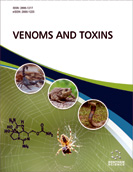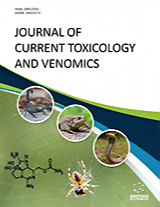Abstract
Background: Hemolytic uremic syndrome associated with Shiga-toxin produced by Escherichia coli is a serious worldwide foodborne disease. Nowadays, no treatment is available, only supportive care can be provided, and 50 % of the patients require a period of dialysis. Recently, a therapy based on Neutralizing Equine Anti Shiga Toxin (NEAST) antibodies has been developed. NEAST is composed of F(ab’)2 fragments from equine immunoglobulins.
Objective: The purpose of this study was to develop an ELISA to measure serum concentrations of NEAST in mice and rabbits, and to validate it according to international recommendations. The validated method was further used to analyze the NEAST PK during preclinical studies.
Methods: A sandwich ELISA was developed, the performance of the calibration curve was assessed, and it was validated based on the parameters as accuracy, precision, specificity, selectivity, stability of the analyte, and dilutional linearity.
Results: This immunoassay was specific, sensitive, accurate and precise in a dynamic range from 7.81 to 500 ng/mL and from 15.63 to 500 ng/mL for mice and rabbits, respectively. This method was successfully applied to PK studies of NEAST after intravenous administration.
Conclusion: The results obtained are expected for a robust ELISA used for macromolecule analysis. Since NEAST is an equine F(ab′)2, this immunoassay would serve for the evaluation of the PK profile of any biological product based on molecules with similar characteristics. This immunoassay may be useful for current and future preclinical trials conducted for registration purposes.
Keywords: NEAST, ELISA, validation, preclinical studies, pharmacokinetic studies, toxin.
Graphical Abstract
[http://dx.doi.org/10.1093/cid/cis196] [PMID: 22412065]
[http://dx.doi.org/10.4025/actascianimsci.v42i1.47483]
[http://dx.doi.org/10.1134/S1022795420100087]
[http://dx.doi.org/10.1016/S0001-706X(98)00038-2] [PMID: 9777717]
[http://dx.doi.org/10.1371/journal.pntd.0000243] [PMID: 18509475]
[http://dx.doi.org/10.2217/imt.14.40] [PMID: 24673720]
[http://dx.doi.org/10.1016/S1473-3099(14)71072-2] [PMID: 25662592]
[http://dx.doi.org/10.1016/j.eclinm.2021.100843] [PMID: 33870149]
[http://dx.doi.org/10.1016/j.taap.2021.115796] [PMID: 34785274]
[http://dx.doi.org/10.4269/ajtmh.1999.61.1017] [PMID: 10674688]
[http://dx.doi.org/10.4269/ajtmh.2007.77.538] [PMID: 17827375]
[http://dx.doi.org/10.1001/jama.1965.03090050035009] [PMID: 14313890]
[http://dx.doi.org/10.1016/S0750-7658(98)80105-6] [PMID: 9750806]
[http://dx.doi.org/10.1086/318080] [PMID: 11133375]
[http://dx.doi.org/10.1016/j.toxicon.2013.07.017] [PMID: 23916602]
[PMID: 23674985]
[http://dx.doi.org/10.1002/prot.20248] [PMID: 15390265]
[http://dx.doi.org/10.4049/jimmunol.1300999] [PMID: 23918978]
[http://dx.doi.org/10.1016/j.plabm.2019.e00144] [PMID: 31867426]
[http://dx.doi.org/10.1016/j.jim.2004.09.012] [PMID: 15627622]
[http://dx.doi.org/10.1021/acs.chemrestox.0c00070] [PMID: 32172570]
[http://dx.doi.org/10.1096/fj.07-9574LSF] [PMID: 17942826]
[http://dx.doi.org/10.1007/s11095-005-9045-3] [PMID: 16397743]
[http://dx.doi.org/10.1007/s00262-008-0633-z] [PMID: 19066888]
[http://dx.doi.org/10.1016/j.jim.2010.09.023] [PMID: 20869964]
[http://dx.doi.org/10.1016/S0731-7085(99)00244-7] [PMID: 10708409]
[http://dx.doi.org/10.1023/B:PHAM.0000003390.51761.3d] [PMID: 14661937]
[http://dx.doi.org/10.1007/s11095-005-5917-9] [PMID: 16132353]
[http://dx.doi.org/10.1016/j.jim.2010.05.009] [PMID: 20547164]
[http://dx.doi.org/10.1038/sj.bjp.0707441] [PMID: 17876307]
[http://dx.doi.org/10.1023/A:1013062600566] [PMID: 11683255]
[http://dx.doi.org/10.1002/jps.20178] [PMID: 15389672]
[http://dx.doi.org/10.1016/j.toxicon.2006.05.010] [PMID: 16863656]
[http://dx.doi.org/10.1016/j.intimp.2010.08.018] [PMID: 20849955]
[http://dx.doi.org/10.1016/j.toxicon.2013.09.004] [PMID: 24047962]
 1
1



